Giro d'Italia: Where the race was won
The six key moments that lead to Tao Geoghegan Hart's final victory in Milan
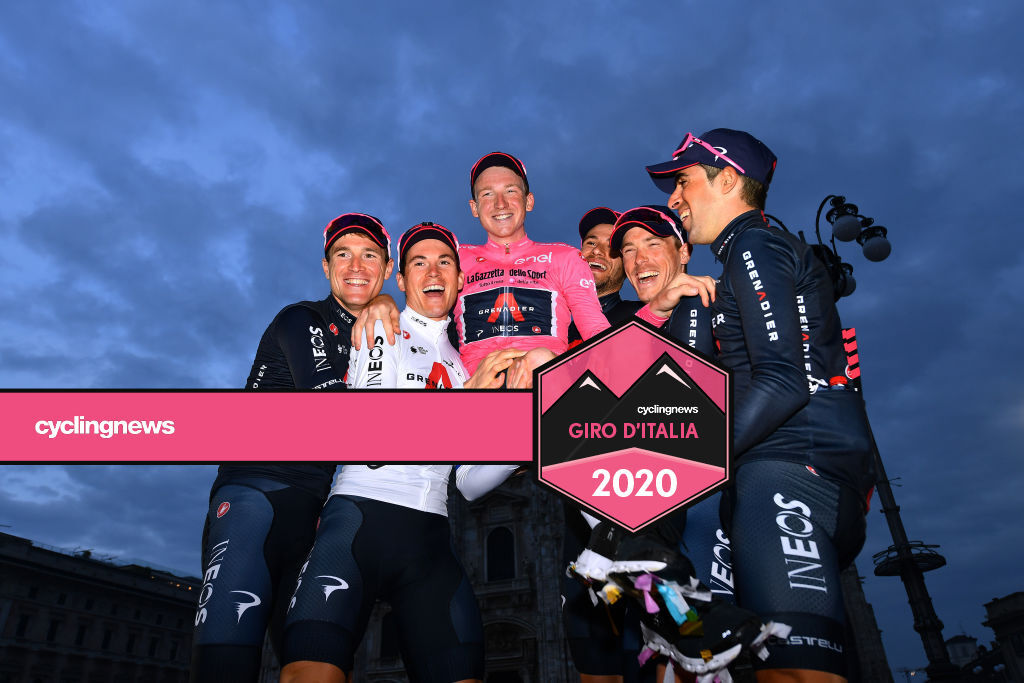
Every Grand Tour is a unique story, one of three weeks of continuous, connected racing across different terrain.
The Giro d’Italia is loved for its intrinsic beauty and sheer unpredictability. There is never a quiet day at the Giro d’Italia, even when the road is pan flat and the riders prefer to make a protest.
This year’s Corsa Rosa was more dramatic than usual, with an October race date, the on-going COVID-19 pandemic and a route packed with mountains but balanced with time trials.
The race inspired hundreds of attacks and personal stories of success and defeat. The next generation of riders again ushered the veterans towards the back of the stage and grabbed the limelight with youthful enthusiasm.
Jai Hindley and Tao Geoghegan Hart eventually emerged to fight for the final maglia rosa in Milan, the final time trial dividing them by just 39 seconds.
These are the six moments of this year’s race, where destiny stepped in, where individual and team performances made massive differences, and where the race was won and where it was lost.
Geraint Thomas crashes out on stage 3
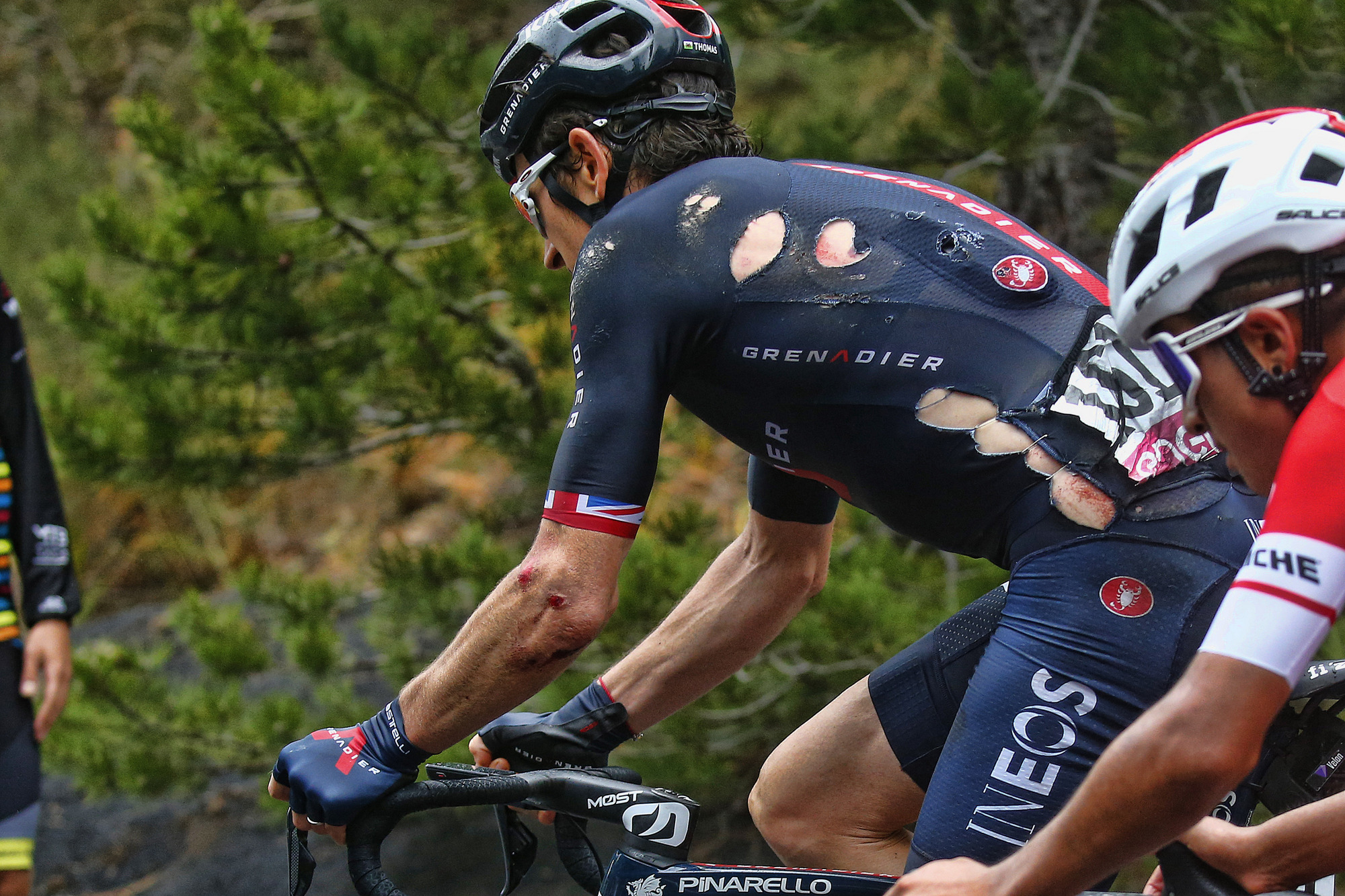
The butterfly effect was in action early at the 2020 Giro d’Italia. Were it not for a stray bidon in the neutralised zone in Enna on stage 3, Tao Geoghegan Hart would surely never have had the freedom to go on and win the maglia rosa, and would certainly have been too far down on time to mount a challenge if Thomas had abandoned at a later point.
Get The Leadout Newsletter
The latest race content, interviews, features, reviews and expert buying guides, direct to your inbox!
Of all the riders, in all the races, in all the world, the errant bidon had to roll into the path of Geraint Thomas. The Welshman bravely remounted but his injuries – including a fractured pelvis – would end his challenge and force him to abandon the next day.
As well as removing a lofty name from the list of favourites, the incident also massively altered the dynamic of the race. Ineos arrived in Sicily with one of the strongest squads, but Thomas’ abandon meant that their focus would switch to chasing stage victories, as directeur sportif Matteo Tosatto confirmed to Cyclingnews ahead of stage 4.
At that point, Tao Geoghegan Hart was 24th overall, more than three minutes down, having soft-pedalled the opening time trial and lost ground on Etna. Nobody – least of all Geoghegan Hart himself – saw him as a potential winner of the race at that point, but with nobody else to work for, the Londoner began to rise through the rankings. Random chance presented an opportunity, but there was nothing haphazard about the way Geoghegan Hart seized it. (BR)
Mitchelton-Scott and Jumbo-Visma leave the race amid coronavirus concerns
Sport can be a form of escapism at times, but in this most unusual year, the concerns of the real world could not be simply left behind on the start line. The coronavirus pandemic forced the Giro’s postponement to October, and it contributed to an atmosphere of unease once the race got underway.
From the outset, it was never entirely certain that the gruppo would make it all the way to Milan, and the likelihood seemed to diminish further in Lanciano ahead of stage 10.
Simon Yates had already abandoned after testing positive for COVID-19 the previous week and when four staff members from Mitchelton-Scott also tested positive in the mandatory round of rest day testing, the team took the sensible decision to leave the race en masse. Steven Kruisjwijk also tested positive on the rest day, and although his Jumbo-Visma team arrived for the start of stage 10 in Lanciano, they never came off the bus, electing instead to follow Mitchelton-Scott out of the race.
While RCS Sport expressed dismay at the abrupt nature of Jumbo-Visma’s withdrawal, the Dutch squad could argue that the Giro’s COVID-19 protocol allowed teams to stay after positive cases rather than compelling them to do so. Team Sunweb, AG2R La Mondiale and Ineos all stayed in the race after positive cases, but out of choice rather than obligation.
Two days later, the Giro seemed at further risk after the EF Pro Cycling management called for the race to be brought to a halt after stage 14, citing concerns about the event’s coronavirus ‘bubble,’ though the UCI swiftly rejected that request.
Additional rounds of rapid COVID-19 tests were ordered at the end of the second week. On the second rest day, only 2 out of 492 PCR tests carried out came back as positive.
Despite case number rising dramatically across Italy, the Giro continued, bereft of two more favourites, and two more of the stronger teams to boot. A most unpredictable race became ever more unreadable but was not defeated by the virus. (BR)
Third weekend brings definition to hazy GC picture and confirms Almeida’s quality

For two weeks, the general classification picture at the Giro had been hazy and controlled as Joåo Almeida and his Deceunick-QuickStep rode on the front as the race rolled north up the Adriatic coast
The overall battle suddenly sharpened into focus on the third weekend, which saw the rolling Valdobbiadene time trial followed in quick succession by the summit finish at Piancavallo. The second day, in particular, set the tone for what was to follow in the final third of the Giro.
Team Sunweb had targeted the stage for over a week, sparing their supporting cast as best they could for the big day, and after Chris Hamilton had pared back the leading group, Jai Hindley took over with a supersonic tempo that only two men – his leader Wilco Kelderman and Geoghegan Hart – could follow.
By day’s end, contenders like Vincenzo Nibali and Jakob Fuglsang were over three minutes back, and Kelderman had moved to within 15 seconds of the maglia rosa, marking himself out as the logical favourite for overall victory.
In hindsight, it was already clear at Piancavallo that Hindley was the stronger of the Sunweb pair in the mountains, and it should have been evident, too, that Geoghegan Hart would be difficult to shake. At that point, however, Kelderman’s eyes were on Almeida: the man directly ahead of him in the general classification.
The neo-professional had led the race since Mount Etna and extended his lead with a powerful display in the Prosecco time trial. His lead was slashed on Piancavallo, but in defeat, his reputation was only enhanced, as he made a spirited lone pursuit in the last six kilometres to salvage the maglia rosa.
With the Giro’s passage over the Stelvio still uncertain due to the weather conditions, Almeida remained a very realistic candidate for overall victory. It would eventually prove a mountain too far, but the youngster never laid down arms, delivering resolute showings on the final ascent at the Laghi di Cancano, at Sestriere and again at Milan to place fourth overall.
If Piancavallo indicated that Kelderman, Geoghegan Hart or Hindley would win the Giro, it also suggested that Almeida could win one for himself in the not-too-distant future. (BR)
Stelvio exposes Team Sunweb's short-sighted tactics
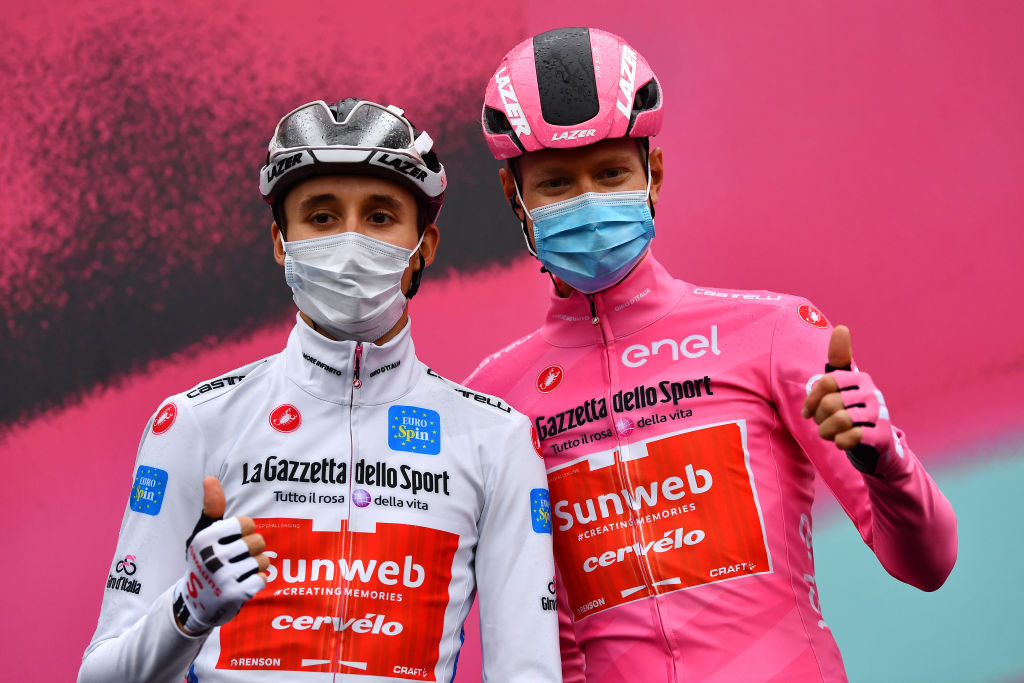
With the Colle dell’Agnello and the Col d'Izoard removed from stage 20, the climb of mighty Passo dello Stelvio made stage 18 the hardest and so naturally the decisive stage of the race. Everything else on the road to Milan was a consequence of what played out on the hairpins of the 24.7km climb to the 2,758-metre high summit.
The high speed on the lower slopes soon scattered Nibali and Fuglsang to the wind and Almeida also lost contact and the maglia rosa as Rohan Dennis dragged Geoghegan Hart and Hindley away from Wilco Kelderman. The Australian singlehandedly turned the race upside down at its highest point.
Team Sunweb tried to play on two tables rather than go all-in on one, perhaps unsure they had good enough cards to win the maglia rosa. They hoped Kelderman could limit his losses and so take the race lead, even though he was left to ride the final 45 kilometres alone. Hindley was plan B and could perhaps win the stage and take pink if Kelderman faltered.
The team achieved both goals on the day and their tactical call was logical but perhaps short-sighted. Hindley needed to gain time on Geoghegan Hart if he was to go on to win the Giro d’Italia in Milan. However, even if he was able to, he couldn’t attack or work with Geoghegan Hart because Kelderman was chasing the dream of going into pink.
Hindley won the stage but Geoghegan Hart was only 15 seconds down on Kelderman and only three seconds down on the Australian. Suddenly, Ineos and Geoghegan Hart – the superior time trialist – knew they had the upper hand and that victory was within reach. (SF)
Dennis steamrolls the road to Sestriere for Geoghegan Hart
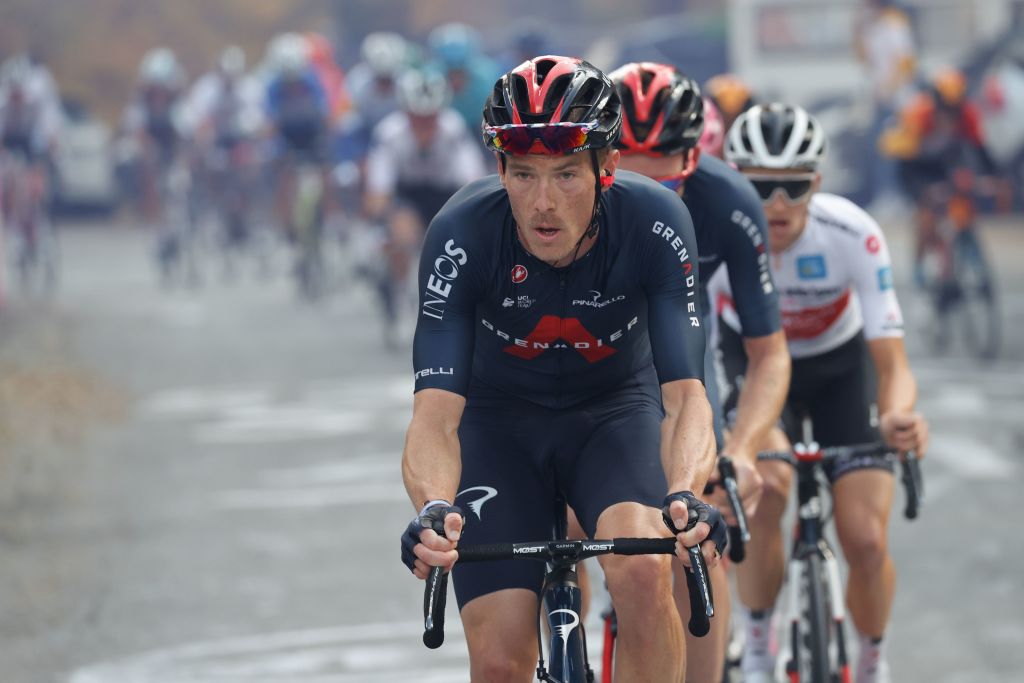
Rohan Dennis again made the difference on the climbs to Sestriere just as he had over the Stelvio, using his time trialing power and newfound happiness to steam roll the climbs, blow apart the front group and distance Kelderman once and for all.
His speed and presence on the climbs to Sestriere limited Hindley’s chance of attack, setting up Geoghegan Hart for the final time trial.
Dennis deservedly won the public vote as Ineos’ MVP of the Giro. He guided Geoghegan Hart like an older brother and enjoyed every minute of it as he also proved his critics wrong.
Dave Brailsford proclaimed Ineos had abandoned the defensive style of power-meter controlled, team train racing in the mountains. Yet Dennis was arguably the one-man train that dragged Geoghegan Hart away from his overall rivals and set-up the head to head challenge with Jai Hindley in the Milan time trial. (SF)
The race of truth to central Milan
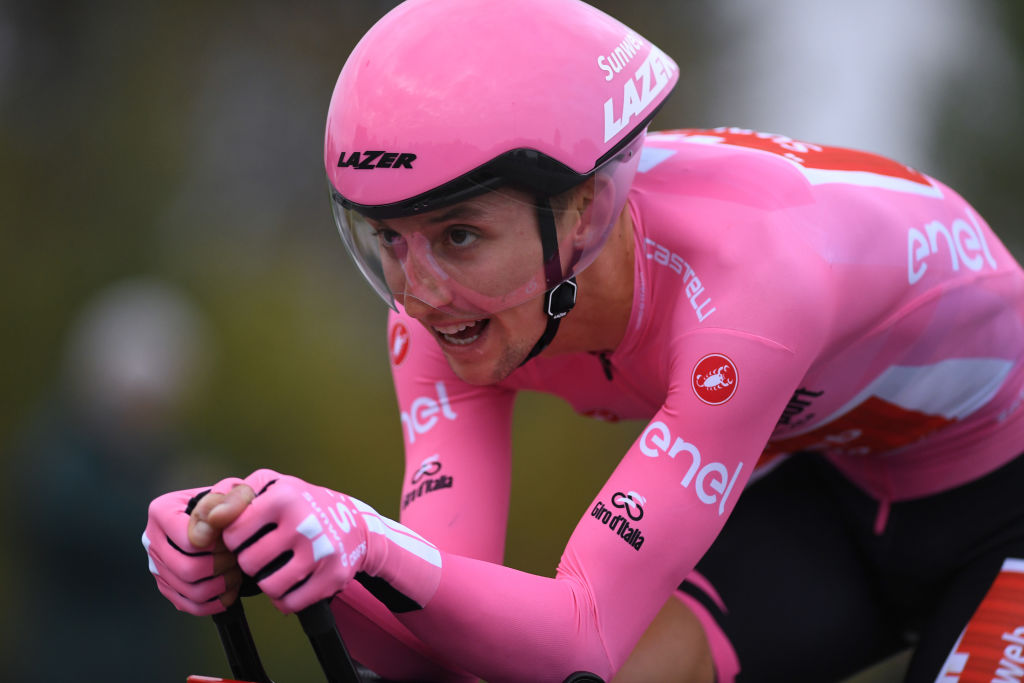
No Grand Tour had ever started with two riders on the same time and the 15.7km time trial was a nail biting race of truth until the finish line in the shadow of the gothic Duomo in central Milan.
As past performances had indicated, Geoghegan Hart was the better time triallist but there was always a chance that something would go wrong and give Hindley a chance.
Other young riders with a chance to snatch victory at the Giro d’Italia may have collapsed under a mountain of nerves, aware that a puncture, a loss of concentration on a corner or even a crash could end every chance of success. Not Geoghegan Hart. Wise beyond his years and always calm and collected, he appeared to be a naturally born Grand Tour leader. Yet again he had shaped his own destiny.
He also had cycling physiology on his side. His bigger build and time trialling skills allowed him to push a 58 chainring and a generally a bigger gear. Hindley is more of a climber and opted for a 56 and higher cadence.
His lower watts were not enough to defend the maglia rosa and he lost 39 seconds and overall victory to Geoghegan Hart. (SF)
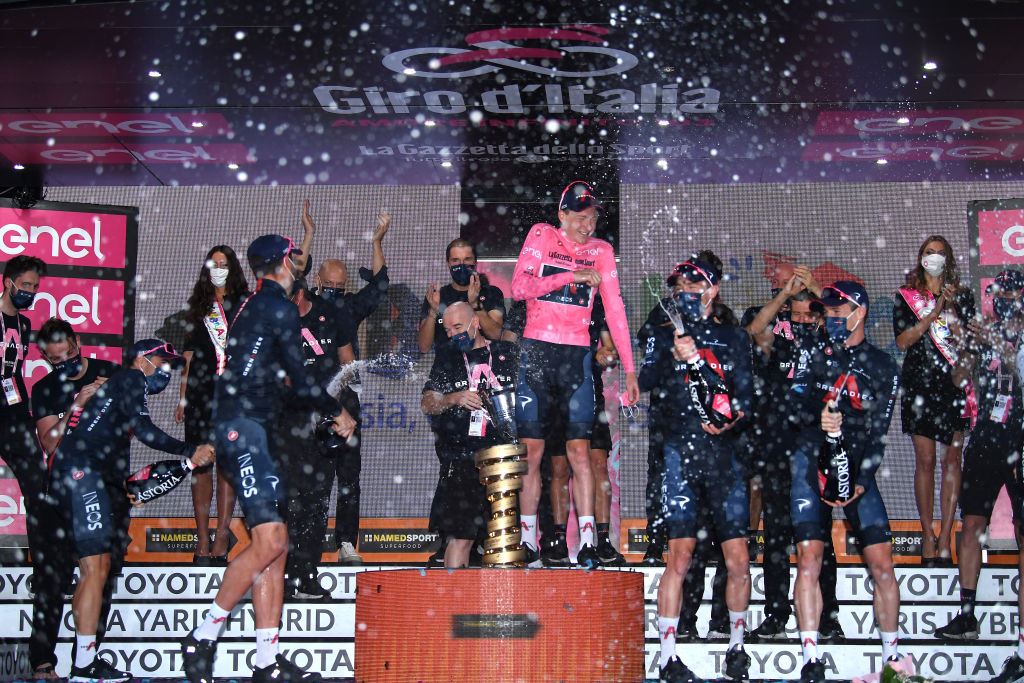

Barry Ryan was Head of Features at Cyclingnews. He has covered professional cycling since 2010, reporting from the Tour de France, Giro d’Italia and events from Argentina to Japan. His writing has appeared in The Independent, Procycling and Cycling Plus. He is the author of The Ascent: Sean Kelly, Stephen Roche and the Rise of Irish Cycling’s Golden Generation, published by Gill Books.